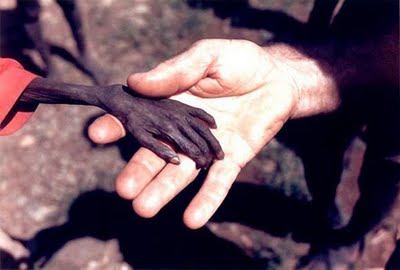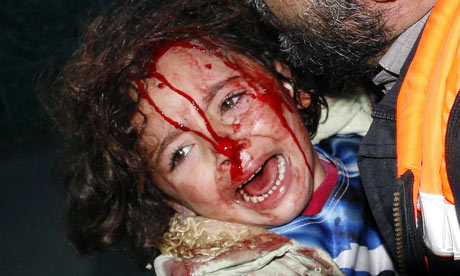Photojournalism is a unique and powerful form of storytelling
through visual images. Its original use
was for print magazines and newspapers, but eventually transformed multimedia with
the power to reach audiences never before imagined with instantaneous impact. Photojournalism will continue to write our
visual history and create interpreted stories within our memories forever.

Photographer - Michael Wells
Photojournalism works through various forms, from covering
breaking news and wars, to featuring stories and forming visual framework. All of its functions illuminate the issues of
our time with a depth and outlook that few other methods can achieve. Photojournalism can also work as a catalyst for change through the power
of the images captured and portrayed to seemingly neutral parties by enlightening
our deeper understanding of the world.

Photographer - Fadi Adwan
Many people don’t realize there is a great amount of
technique involved in this field. A
person must have superior knowledge of their equipment and surroundings. A
good photojournalist needs be open minded and willing to enter into a multitude
of situations. Their main objective is
to capture an image and tell a story through expressions. Photojournalism differs from regular
photography because photojournalists usually look to shoot an actual action
while photographers usually look for objects.
In other words, photojournalists shoot "action verbs" while
regular photographers shoot "nouns".
It's important to know where photojournalism comes from because it has transformed the way the world views current events. If it were not photojournalism the world would be left in the dark of many things going on around the world. The raw photos of the Great Depression and World Wars were just a few examples of the foundational importance of photojournalism becoming relevant. Rachael Town editor and professional photographer from Photoluminary wrote an interesting article titled "A Brief History on Photojournalism." In summary, she tells how photojournalism started with the first 35mm
Leica camera in 1925, as well as the invention of the first commercial flash
bulbs in 1927, which set the stage for the “golden age of photojournalism”, (1930s
to the 1960s). The combination of these
products being small enough and light enough to carry around in most places
produced a new freedom to convey newsworthy events around the world.

Photographer - Walker Evans
The Great Depression prompted photographers to leave their
studios and begin to document the lives of real people going through hard times. The
lives that were tormented by poverty were captured through powerful photographs
that told the stories of these people lives without needing words. Rachael Town would go on to say "Various magazines such as Life (probably the most famous of its time),
Sports Illustrated, Paris Match, and Picture Post began publishing
photos of events that until that time would never have been seen by the
general public. Instructor Ross Collins from North Dakota State University wrote an article titled "A Brief History of Photography and Photojournalism" stating "in the World War II era, Life was probably the most influential
photojournalism magazine in the world. During that war, the most
dramatic pictures of the conflict came not so often from the newspapers
as from the weekly photojournalism magazines, photos that still are
famous today." The Depression may have been what launched photojournalism, but it has grown steadily through years impacting the lives of millions around the globe. The impact photos have had on society throughout the years is undeniable, and they will continue to shape history in the years ahead.
No comments:
Post a Comment